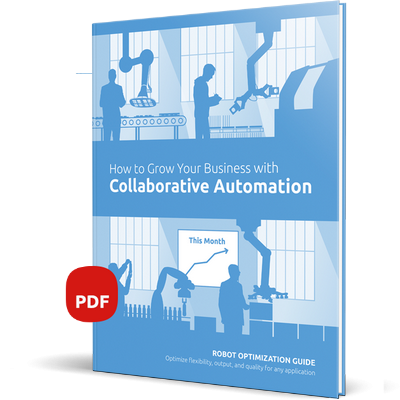#ThoughtsOnRobots: Derek Chua


In this interview with OnRobot, Managing Director Derek Chua from Aubotic shares his views on the future of collaborative applications.
For Derek Chua from the Singapore-based system integrator Aubotic, the biggest advantage for collaborative applications is their ability to improve efficiency in an easy way.
“Basically, deploying collaborative applications is like giving an additional arm to the worker with a minimum of changes to the existing setup. The applications can really increase the productivity and efficiency of the whole work process flow, and furthermore, they can enhance the working environment and empower the workers to engage in more complicated tasks.”
“Collaborative applications can especially create value when the manufacturer has a high mix and low volume production. In such an environment, the end-user needs frequent setup changeovers and will appreciate the flexibility, ease of changeover, and programming of a collaborative application.”
Social distancing in place
According to Derek Chua, the restrictions about social distancing in the aftermath of Covid-19 have shown that collaborative applications have another advantage.
“They can be a big help for manufacturers with the measures they have to take due to Covid-19 because collaborative robots can work closely with humans unlike traditional industry robots. For example, in an assembly line it is possible to have applications co-handling the assembly next to the worker with social distancing measure in place instead of having the co-workers working side by side.”
Management support is crucial
How do you successfully deploy a collaborative application? According to Derek Chua, support from the organization’s management is crucial.
“The management team must really believe in the collaborative applications. Only in that way will they be able to support and implement the necessary changes to the workflow, thus educating the downstream work force in preparation for the new implementations.”
“Also, all stakeholders within the organization for the project must participate from the start to create process ownership. Engaging the right external partner, e.g. a system integrator, is equally important as the partner will often be the one who works out the optimal solution for a particular collaborative application based on the partner’s expertise.”
Deployed in various industries
In recent years, collaborative applications have been widely deployed in various industries, especially in those with labor intensive processes. In the future, Derek Chua thinks an increasing number of companies will deploy collaborative applications.
“There are still many existing human labor tasks which can be handled by collaborative applications. In the next five years, I think especially medical and electronics assembly operations will continue to see more deployment of collaborative applications.“
“Popular applications like machine tending, packaging and material handling will probably continue to be the most deployed applications, but we will also see an increasing use of force sensing and vision to further enhance the applications’ capabilities.”
-----------------------------------------------------------------------
#ThoughtsOnRobots

|
Hoe uw bedrijf laten groeien met collaboratieve toepassingen
Met het aanbreken van slimmere, meer adaptieve gereedschappen kunnen robots nu met meer snelheid, kracht, veiligheid en precisie functioneren en een brede waaier aan taken uitvoeren, terwijl de ROI wordt gemaximaliseerd. Leer meer over hoe u een snellere productie tegen lagere kosten mogelijk kunt maken door ons gratis eBook te downloaden.
DOWNLOAD HET GRATIS eBOOK
|

|

